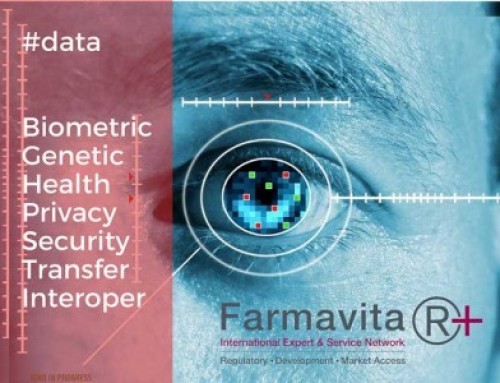Fixed-dose combination drug products are becoming increasingly important in the treatment of patients with diabetes,1 cardiovascular disease,2 and infectious disease.3 Within the last two decades, the U.S. Food and Drug Administration (FDA) approved 19 new drug applications (NDAs) for fixed-dose combination drugs containing at least one new drug substance.4 More than half of these NDAs were approved in the last seven years.5 As with the development of any pharmaceutical product, developers of fixed-dose combination drugs will seek to maximize the patent protection and market exclusivities provided by the United States Patent and Trademark Office (USPTO) and the FDA, respectively.
In the United States, the two main protections available to safeguard fixed-dose combination drugs are utility patents and market exclusivities.
Patent-Based Exclusivity
Utility patents are granted by the USPTO. The term of a utility patent begins at issue and is limited to 20 years from the filing date of the earliest non-provisional application upon which the patent is based.6, 7 Utility patents can be extended for unreasonable USPTO delays in examining patent applications by patent term adjustment.8 For fixed-dose combination drugs, the term of a United States patent also may be extended for delays arising from the FDA approval process by patent term extension.9
Market-Based “Data” Exclusivities
Fixed-dose combination drugs also are protected from competition by market exclusivities granted by the FDA (not the USPTO).
New drugs approved by the FDA, including fixed-dose combination drug products, are eligible for different terms of market exclusivity10, 11 depending on the previous approval status of their active ingredient(s),12 whether the approval is for an orphan indication,13 and whether the drug has been studied in pediatric patients.14
Market exclusivity is in addition to and separate from patent exclusivity, and may run concurrently, or not, with patent exclusivity.
The FDA traditionally has interpreted the law such that fixed-dose combination drug products—which contain both a previously unapproved new drug substance15 and a previously approved drug substance16 (“new/old drug combinations”)—are entitled to only three years of market exclusivity, and not the five years of market exclusivity reserved for drug products that contain only active ingredient(s) not previously approved by the FDA. However, per the recently released draft guidance document, the FDA is now intending to reverse this long history of statutory interpretation of market exclusivities applicable for new/old drug combinations.17, 18
The FDA now intends to re-interpret the law such that newly filed NDAs for new/old drug combinations will get five years (not three years as in the past) of market exclusivity, which will keep generics off the market for two additional years. Also, as a result of the FDA treating the new drug in new/old drug until five years after approval to submit their applications (unless those applications contain paragraph IV certifications, in which case the applications can be submitted four years after approval). These provisions produce a windfall to brand manufacturers.19
In altering its longstanding statutory interpretation, the FDA emphasized that new/old drug combinations are “increasingly prevalent in certain therapeutic areas” and that “these products play an important role in optimizing adherence to dosing regimens and improving patient outcomes.”20 The FDA was prompted to reconsider increasing market exclusivities of new/old drug combinations by Citizen’s Petitions submitted on behalf of Gilead Sciences, Inc., Ferring Pharmaceuticals, Inc., and Bayer HealthCare Pharmaceuticals, Inc. for the combination drugs Stribild, Prepopik, and Natazia, respectively.21
The petitioners argued that the FDA’s current policy prioritizes NDA submissions for single-active ingredient drugs over NDA submissions for fixed-dose combination drugs, and that this “might lead to suboptimal drug development strategies, especially in light of the increasing importance of fixed-combinations.”22 Additionally, the petitioners stressed that “timing the order of approval to preserve exclusivity may not be available in some situations, such as for a new active moiety that may not be effective or safe unless it is marketed in a fixed-combination.”23
Ironically, because the FDA intends to grant the additional market exclusivity only prospectively, drugs like Stribild, Prepopik, and Natazia, which provided basis for the FDA’s reconsideration of the issue, would not be entitled to the additional exclusivity period.
Increased market exclusivities, which will take effect when the FDA finalizes the guidance, will be important to all organizations developing fixed-dose combination drugs. They also will be important to small, venture-backed pharmaceutical companies, as they can increase licensing royalties, company valuations, and post-merger or acquisition earn-outs. Finally, increased market exclusivities will affect the timing of the introduction of generic combination drug products.
Thus, strategies for developing and commercializing new/old drug combinations should be carefully reevaluated and optimized in light of the proposed new statutory interpretation that will grant five-year market exclusivity to these products.
For questions regarding market exclusivities, or any other related intellectual property or regulatory affairs matter, please contact David Hoffmeister, Vern Norviel, Samir Elamrani, Peter Munson, Stu Williams, T.O. Kong, Jeff Guise,Charles Andres, or any member of Wilson Sonsini Goodrich & Rosati’s patent and innovation strategies, life sciences, or global generics practices.
1 Janumet, a combination of the anti-diabetes medicine Glucophage (metformin HCl) and the dipeptidyl peptidase-4 (DPP-4) inhibitor Januvia (sitagliptin), is a combination drug targeting type II diabetes.
2 Caduet, a combination of the blood-pressure-lowering drug Norvasc (amlodipine besylate) and the cholesterol-lowering drug Lipitor (atorvastatin calcium), is a combination drug targeting cardiovascular disease.
3 Truvada, a combination of the nucleotide analog reverse transcriptase inhibitor Viread (tenofovir disoproxil fumarate) and the nucleoside reverse transcriptase inhibitor Emtriva (emtricitabine), is a combination drug targeting HIV infection.
4 See “Guidance for Industry: New Chemical Entity Exclusivity Determinations for Certain Fixed-Combination Drug Products,” U.S. Food and Drug Administration, February 21, 2014, at page 7, available online at http://www.fda.gov/downloads/Drugs/GuidanceComplianceRegulatoryInformation/Guidances/UCM386685.pdf (last accessed February 23, 2014).
5 Id.
6 For U.S. utility applications filed on or after June 8, 1995, and excluding the effects of, e.g., terminal disclaimer(s), patent term adjustment, and patent term extension. See 35 U.S.C. § 154(c).
7 See 35 U.S.C. §§ 154(a)(2)-(a)(3).
8 See 35 U.S.C. § 154(b).
9 See The Drug Price Competition and Patent Term Restoration Act of 1984, P.L. 98-417.
10 Market exclusivity prevents submission to the FDA and/or approval of any abbreviated new drug application (ANDA) or Federal Food, Drug, and Cosmetic Act (FD&C Act) § 505(b)(2) application that refers to the approved drug. It is worth noting that market exclusivity does not block submission, review, or approval of a FD&C Act § 505(b)(1) NDA. Also, a § 505(b)(2) application or ANDA may be submitted after the expiration of four years from the date of NDA approval, for drugs having five years of exclusivity, if the § 505(b)(2) application or ANDA contains a paragraph IV certification.
11 E.g., Orphan drugs are granted seven years of market exclusivity, new chemical entities (NCEs) are granted five years of market exclusivity, and older drugs that represent, e.g., a new use or a new dose are granted three years of market exclusivity. When pediatric studies are conducted at the request of the FDA, six months of additional pediatric exclusivity are provided. See, e.g., FDA: “Frequently Asked Questions on Patents and Exclusivity,” available online athttp://www.fda.gov/Drugs/DevelopmentApprovalProcess/ucm079031.htm (last accessed February 23, 2014).
12 See, e.g., FD&C Act § 505(j)(5)(F)(ii).
13 Orphan drugs and biologics “are defined as those intended for the safe and effective treatment, diagnosis or prevention of rare diseases/disorders that affect fewer than 200,000 people in the U.S., or that affect more than 200,000 persons but are not expected to recover the costs of developing and marketing a treatment drug.” See, e.g., FDA: “Developing Products for Rare Diseases & Conditions,” available online at http://www.fda.gov/forindustry/DevelopingProductsforrareDiseasesConditions/default.htm (last accessed February 23, 2014).
14 See the Food and Drug Administration Modernization Act of 1997, P.L. 105-115, § 505(A). Pediatric exclusivity is often additive to other exclusivity.
15 E.g., a drug substance not previously approved under the FD&C Act § 505(b).
16 E.g., a drug substance previously approved under the FD&C Act § 505(b).
17 See “Guidance for Industry: New Chemical Entity Exclusivity Determinations for Certain Fixed-Combination Drug Products,” U.S. Food and Drug Administration, February 21, 2014, available online at http://www.fda.gov/downloads/Drugs/GuidanceComplianceRegulatoryInformation/Guidances/UCM386685.pdf (last accessed February 23, 2014).
18 The FDA is changing its definition of the term “drug,” which traditionally meant “drug product,” to mean “drug substance.” Thus, in evaluating a combination drug product for market exclusivity, the FDA will look at each drug substance in the combination drug product and determine whether at least one of the drug substances was not previously approved under § 505(b) of the FD&C Act. If one of the drug substances was not previously approved by the FDA under § 505(b) of the FD&C Act, then that substance will be treated as a new chemical entity and the combination drug product will get five years of market exclusivity.
More formally, the FD&C Act § 505(j)(5)(F)(ii), which contains the five-year exclusivity statement, will be read by the FDA as follows:
If an application submitted under subsection (b) of this section for a [drug substance], no active ingredient (including any ester or salt of the active ingredient) of which has been approved in any other application under subsection (b) of this section, is approved . . . no application may be submitted under this subsection which refers to the drug for which the subsection (b) application was submitted before the expiration of five years from the date of the approval under subsection (b) of this section . . .
19 See “Guidance for Industry: New Chemical Entity Exclusivity Determinations for Certain Fixed-Combination Drug Products,” U.S. Food and Drug Administration, February 21, 2014, at page 7, available online athttp://www.fda.gov/downloads/Drugs/
GuidanceComplianceRegulatoryInformation/Guidances/UCM386685.pdf (last accessed February 23, 2014).
20 Id. at 1.
21 Id. at 7.
22 Id.
23 Id.
Source: Wilson Sonsini Goodrich & Rosati (http://www.wsgr.com/)





Leave A Comment